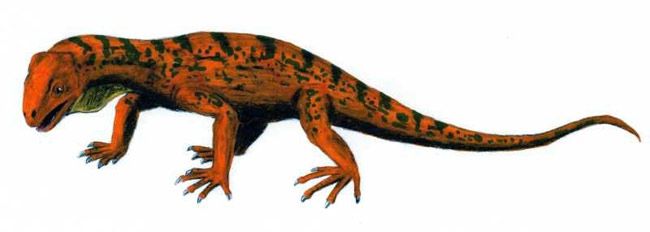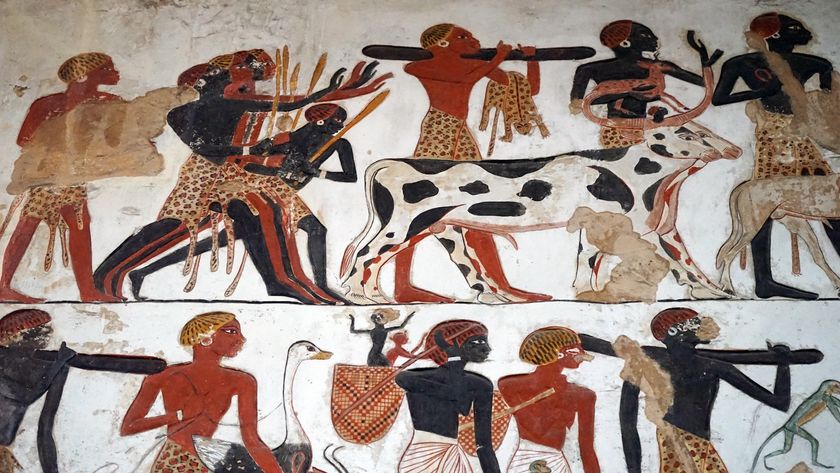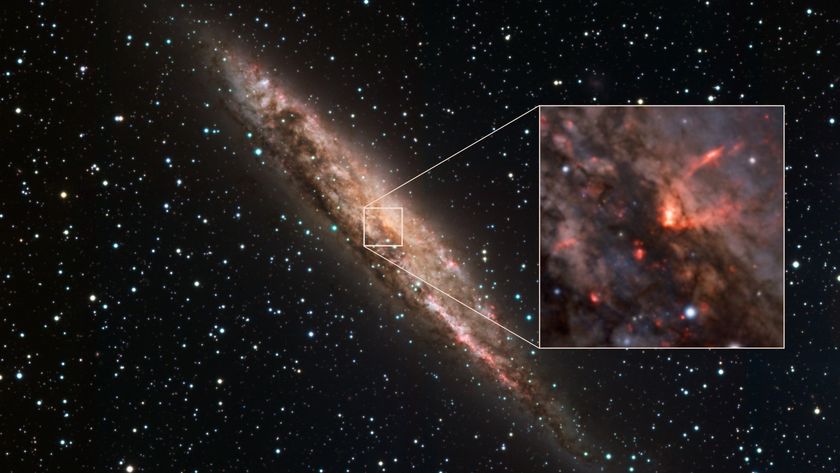Dinosaur Demoted to 'Ancient Reptile' Status

A four-legged weed-whacker of sorts that lived some 230 million years ago just lost its dinosaur affiliation.
While past analyses of this once-dinosaur called Azendohsaurus madagaskarensis were based on its teeth and jaws, the new study relied on the entire skull of the extinct animal discovered in the late 1990s in southwestern Madagascar.
The result suggests A. madagaskarensis is a member of a very early branch on the reptile evolutionary tree.
"Even though this extraordinary ancient reptile looks similar to some plant-eating dinosaurs in some features of the skull and dentition, it is in fact only distantly related to dinosaurs," said John J. Flynn, curator in the Division of Paleontology at the American Museum of Natural History in New York. "With more complete material, we re-assessed features like the down-turned jaw and leaf-shaped teeth found in A. madagaskarensis as convergent with some herbivorous dinosaurs."
Convergent evolution refers to the process in which similar adaptations evolve independently in different groups of organisms.
More than a decade ago, scientists published work in the journal Science suggesting this animal was an early dinosaur based on analyses of fossils of teeth and jaws found in 1972 near a village in Morocco's Atlas Mountains.
The animal was, and still is, considered an archosauromorph, as dinosaurs are a subset of that group. For example, Dinosauria (the group to which dinosaurs belong) is a member of the Archosauria, which is a member of Archosauriformes. And Archosauriformes are members of the Archosauromorpha group. Think nested Russian dolls as an analogy, Flynn said, with Archosauromorpha as the largest doll into which the others fit.
Sign up for the Live Science daily newsletter now
Get the world’s most fascinating discoveries delivered straight to your inbox.
With the new evidence, however, the researchers now figure the animal is not a dinosaur but a member of a very early branch of the Archosauromorpha evolutionary tree, or the "ruling lizards."
The ancient reptile stretched some 6.5 to 13 feet (2 to 4 meters) in length and weighed somewhere between 44 and 110 pounds (20 to 50 kilograms). And it was built for munching greens. Teeth modified for slicing vegetation covered not only its jaws, but also the roof of its mouth.
Though early archosaurs were considered primarily carnivorous, this animal suggests traits linked to herbivory were more widespread across archosaurs, the researchers say.
"Now there are many more cases of herbivorous archosaurs," said researcher André Wyss, professor at the University of California, Santa Barbara. "We are rethinking the evolution of diet and feeding strategies, as well as the broader evolution of the group."
The research, detailed in the journal Palaeontology, was funded by the National Geographic Society, The Field Museum, American Museum of Natural History, the University of California Santa Barbara, and Worldwide Fund for Nature, Madagascar.
- 25 Amazing Ancient Beasts
- Gallery: Evolution's Most Extreme Mammals
- The World's Biggest Beasts
Jeanna Bryner is managing editor of Scientific American. Previously she was editor in chief of Live Science and, prior to that, an editor at Scholastic's Science World magazine. Bryner has an English degree from Salisbury University, a master's degree in biogeochemistry and environmental sciences from the University of Maryland and a graduate science journalism degree from New York University. She has worked as a biologist in Florida, where she monitored wetlands and did field surveys for endangered species, including the gorgeous Florida Scrub Jay. She also received an ocean sciences journalism fellowship from the Woods Hole Oceanographic Institution. She is a firm believer that science is for everyone and that just about everything can be viewed through the lens of science.












